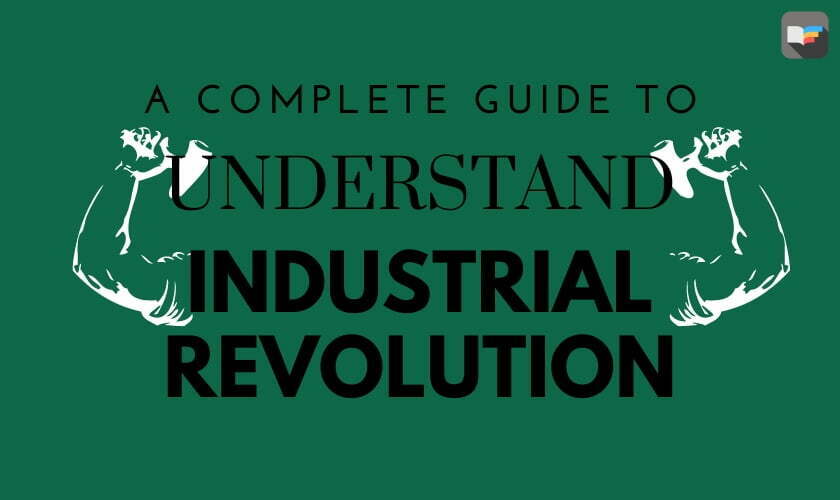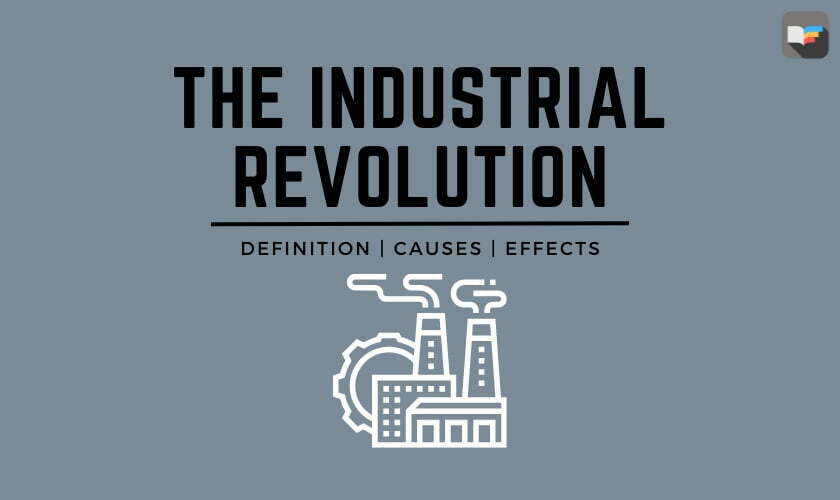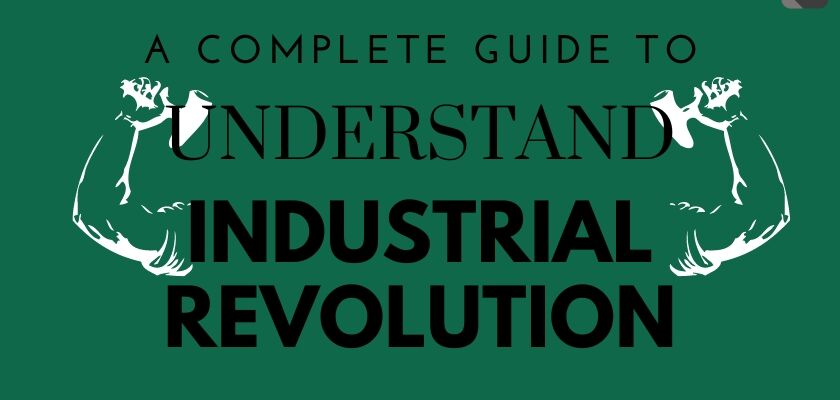The Industrial Revolution was a considerable change and development in the late eighteenth and mid-nineteenth hundreds of years. It denoted progress from difficult work based to machine-based enterprises, perpetually changing how the merchandise was made and prompting a flood in financial development and improvement. This article will investigate the definition, causes, and impacts of the Modern Upset and gain a more profound comprehension of this fundamental crossroads in humanity’s experiences.
At its centre, the Industrial Revolution was a time of development and mechanical advancement. Humankind created new machines and assembling processes, and new energy sources, like coal and steam, were bridled. The outcome was a change in the economy, as industrial facilities supplanted hand-worked studios, and new items were delivered for a gigantic scope. Modern Insurgency was not without its difficulties; it significantly influenced society, both decidedly and adversely.
This article will dive into the essential components of the Modern Upheaval, investigating the different causes, remembering progressions for science and innovation, financial development, and political and social changes. We will look at the impacts of the Industrial Revolution, including the development of urban areas, the ascent of the working class, and the advancement of new work types. Whether you are an understudy of history, a financial expert, or somebody keen on understanding this groundbreaking period, this article will outline the Industrial Revolution and its effect on the world as far as we might be concerned today.

What is Industrial Revolution
According to Professor William, “The significant change in this way of life came with the rapid development of knowledge and its application to production techniques which took place during the end of the eighteenth century and the beginning of the nineteenth century is called the industrial revolution.”
According to New Encyclopedia Britannica, “Industrial Revolution is the process of change from an agrarian, handicraft economy to one dominated by industry and machine manufacture.”
According to ‘A dictionary of Social Science.’, “The term Industrial Revolution denotes the sum-total of those comparatively rapid changes economic, technical, social and intellectual which first launched the industrialized society into existence in Great Britain (U.K.) between 1760 to 1860.”
Causes of the Industrial Revolution
The causes of the industrial revolution are given below:
- Geography: Great Britain has abundant natural resources, such as iron ore and coal, needed for industrialisation. Britain also had access to many navigable rivers and natural harbours, which provided for the easy movement of goods both within the country and overseas.
- Capital: Britain had a vast overseas empire that provided a strong economy. They had the capital needed to build railroads, factories, and mines.
- Agrarian Revolution: There was a change in farming methods that allowed for more excellent food production. New farming techniques, such as seed drills and improved fertilizers, fueled this revolution. This farming revolution resulted in a population explosion due to the higher availability of food. Also, the Enclosure Movement consolidated many small farms into one large farm, leaving many people jobless and homeless. These people would provide the workforce of the industrial revolution.
- Technology and energy: Britain experienced a revolution in energy use as they switched from animal power to water power to steam power in a few short years. The steam engine was the power source of the Industrial Revolution.

Positive Effect
- Mass Production: The Factory System allowed textiles and other goods to be produced. This shifted people from production at home with the Put out System to production in large city factories. Mass production also allowed for lower prices on goods production.
- Big Business: As the Industrial Revolution grew, so did business. To meet the needs of this growth, business owners sold shares of their companies to stockholders who would share the profits and losses. The influx of capital allowed businesses to grow into corporations in many different areas.
- Laissez-Faire Economics: This was an economic philosophy begun by Adam Smith in his book, Wealth of Nations, which stated that business and the economy would run best with no interference from the government. This economic system dominated most of the Industrial Revolution.
- New Social Structure:
- Upper Class: Very rich industrial and business families, old Noble class.
- Upper Middle Class: Business people and professionals such as lawyers and doctors.
- Lower Middle Class: Other professionals such as teachers, shop owners and office workers.
- Working Class: Factory workers and small farmers.
- Urbanization: People moved to towns and cities to be closer to the factories. Conditions were very poor during the early part of the Industrial Revolution, as factory workers lived in overcrowded buildings with no sewage or sanitation services. This resulted in widespread disease.
- Societal Changes: New roles were defined for Middle-Class men and women. Middle-Class men went to work in business, while Middle-Class women worked from home and cared for the family. The higher standard of living for the middle class meant that their children received some form of formal education. Working-class families faced much hardship due to poor living and working conditions, and most working-class children never received an education.
- Improved people’s daily lives: By diversifying the number and quality of the kinds of products factories could turn out, ordinary people learned better, lived better and had more time on their hands as conveniences and efficiencies defined the Industrial Revolution.
- Transportation and technology: The expansion of businesses and factories expanded our transportation network out of necessity and brought us canals, highways and turnpikes. It better connects us as a society. We also saw technological innovations that revolutionized how we lived.
- Jobs: Factories in the significant cities created hundreds of thousands of jobs, expanded the cities, attracted immigrants by the millions and forever changed the country’s landscape, especially in the Northeast.
- Technology: The Industrial Revolution occurred gradually over hundred years. It unfolded in Great Britain toward the end of the 18th century. In 1750, the population in Britain was primarily rural. Most people lived on small farms and provided their needs and necessities by hand. A hundred years later, in 1850, manual labour was largely replaced by mechanized labour and steam power. Much of the population was forced to seek employment in the large urban centres. As industrialism revolutionized the workplace and working conditions, it compelled workers, managers and employers to stay informed about the latest technological developments. Competitors could poach employees trained by one manufacturer. All the major European countries, and the United States, adopted a process referred to as “study touring”. Study touring involved gathering knowledge and information about manufacturing and production techniques and documenting the details in a travel journal. Study touring contributed to the development of the Industrial Revolution.
- European Colonialism: The Industrial Revolution was synonymous with European imperialism and colonialism. The technologies that engendered industrialization also provided the tools to extend their empires around the globe. In the 18th century, Great Britain was the most powerful world power. The other major European powers-France, Spain, Portugal, Holland and Belgium- all staked claims and fought for territory. The European colonies in America, Africa, and the East opened up enormous material and economic resources for the Industrial Revolution. In addition, the increasingly global market opened up new markets of trade that allowed capital to flow back more freely.
Negative Effects
- Environmental Damage: There were few, if any, rules regarding how resources could be removed and used. The air was polluted by factories, as were the soil and rivers. It would take decades to recover from this damage.
- Exploitation: While the industrial revolution created jobs, there were few rules about how much people could be paid, what training they would receive and whether they could be fired for any reason. The jobs were dangerous, and if you died, no one cared. Profit was God.
- Political Corruption: The amount of money generated by the Industrial Revolution created a class of super-rich who could buy any politician or process. During most of the later Industrial Revolution, Washington DC politicians were hopelessly corrupt, and the people and democracy lost in the bargain.

